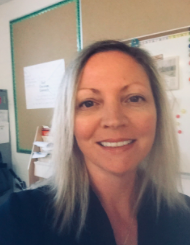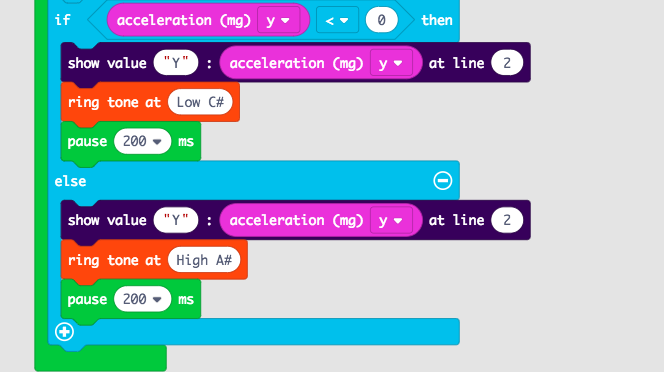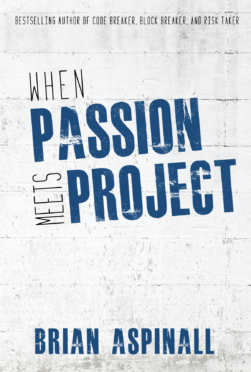WHY CODE?
What makes students so engaged that when the end of the day on a Friday, learning is still taking place and not one student in a class of 25 even notice that the bell is about to ring?
Here’s why:
I was introduced to Brian Aspinall through a colleague. Brian and I are from small Ontario towns, both lovers of math/science and both believers that every student can learn, every student learns differently, and every student has something to share. (speaking for Brian though “Code Breaker”).
The energy Brian exuded the first time he came to my grade 6 classroom exploded through the building. All teachers/students wanted Brian to come and share his passion for coding as well as to have the best PD ever for the teacher.
Oh yes, this happened for some. He came and we were fortunate enough that he could visit a few times. His passion had spread and past students made sure they stopped in to say hi. Coding became a daily practice in our classrooms and our students were better off because of this.
Let me tell you the story of a student who benefited from learning math and science through coding. This student struggled in most aspects of the curriculum (given direct “paper/pencil” activities) but give him a computer to use MakeyMakey and Scratch he could demonstrate the curriculum expectation in most subjects as well at grade level. To be honest, with Brian’s encouragement, through text and facetime, this student became enthusiastic to code, show what he can do but better yet persevere that he can do!
This student has become quite the @makeymakey pro! On Monday he told me he was going to make a “joy stick”. During my 8H science he came to show me he got it to work. Ss were quite impressed too @mraspinall @MmeHarrison1 @belleriverbucs @Mrs_hamzology pic.twitter.com/kGjmbh2WZM
— Melanie (@KlimkowskiMrs) March 8, 2019
Perhaps you are one of the 7800 plus viewers that saw this student create a joystick for Super Mario game. Maybe not a big deal but this grade 6 student learned about conductors/insulators, circuits and more because of this. He also could demonstrate math skills, probability, volume, surface area, patterning through coding and Minecraft (that’s another blog). He did this without having to use a pencil/paper, he did this independently, and he did this with little frustration. Because of coding, he knew he could reach some success.
CLASSROOM CLIMATE
To begin this process, not only do you need classroom resources, technology, Bots and internet but you need to ensure teachers and students have a “mistakes are going to happen” policy. It’s building respect, trust as well as humour. You have to laugh at yourself and with your students, go outside your comfort zone, do not fear the unknown and embrace the learning with your students. Trust, respect, and “friendship” key.
It will take time, it will/can be frustrating (for both teacher and student) and it won’t happen in 50 minutes. It’s an ongoing struggle, exploration, and celebration! Not all will be at the same pace- that’s the fun of it all but not all may like it because they are textbook, study students. That’s ok too but what’s the harm in trying? Work as a pair- no more than that with technology- collaborate, create, configure, discover, uncover, and enjoy!
Even if you as the teacher/parent don’t fully understand the process, let the students problem solve, use the critical thinking skills as well as collaborate with peers to come to a resolution. Problem solving, critical thinking , and collaboration are beneficial assets for 21 century learners. Coding is a learning tool. It truly shouldn’t be used as a reward. It’s not “game time/problem solving time/you’re done your work time”. It’s valuable learning.
WHAT DO I KNOW?
Exactly, what do I know? Who am I? I am just like every elementary teacher in the classroom with many IEPs, behaviour plans, and a classroom with no cap size. Every year is a different challenge and needs to be treated as such. Just because you teach the same grade doesn’t mean you teach the same material. Technology changes as quickly as your student’s next app, and interests vary each year.
The one thing I do know is that when I introduce coding to my students in September, everyday they ask, “Are we coding today?” Most of the time, “Yes”, when I can fit it in my math/science/lit regular schedule that day. (I can hear Brian disagreeing with this statement ;/ but I’m ok with that!). I still have a curriculum to “uncover” in 9 months to the other grades in 10. (EQAO standardized test in Ontario grades 3/6 begins at the end of May/beginning of June)
SO WHY CODE….
Well, I haven’t met a student that doesn’t like coding. Some have discovered the art aspect, sport aspect and gamers love to create their own.
Let’s be real, this is the world now. We as teachers need to come to the reality that technology is the students’ world and we need to teach to their needs.
What happened to cursive writing? What happened to spelling tests? Mad minutes? 5 page math tests? Copying notes from the board? Rote? Textbook science…
Let’s embrace this world. There is a need for experiential learning, outdoor education, computers, robotics. There is a need for differentiation. There is a need for change in our educational system. We as teachers should seek opportunities for students to engage in STEM/STEAM/STREAM activities however, ALL levels of education need to embrace this system to some degree. We can no longer teach our youth to the industrialized world.
WHAT NOW?
I receive a lot of DMs asking about the student with the joystick. Well, he’s moved on to the next grade. That’s all I can tell you. I do however, make it part of my day, every day, to say hi and ask about his day.
And I continue to change my thinking, my program, my apps each year to meet my students’ needs, to introduce higher level coding to my students, embrace mistakes but not accept failure. I continue to learn and learn from others- colleagues and students. I believe in change, growth, ongoing learning as an educator. Critical thinkers, problem solvers, creative minds and communicators are who we need for the 21 century learner and coding is a part of that piece to help achieve this goal.

Melanie Klimkowski, B.A., B.ed., OCT., is an elementary teacher in Ontario. She has been teaching for 20 years. Specialist in Behavioural Special Education and English Language Learners. TLLP (Teacher Learning Leadership Program) for STEMovate in 2014 and continues to teach her students to the STEM, STEAM (STREAM) model to date.

 For all the kids who grow up in a small town and think they don’t stand a chance. You do. I was once that kid.
For all the kids who grow up in a small town and think they don’t stand a chance. You do. I was once that kid.